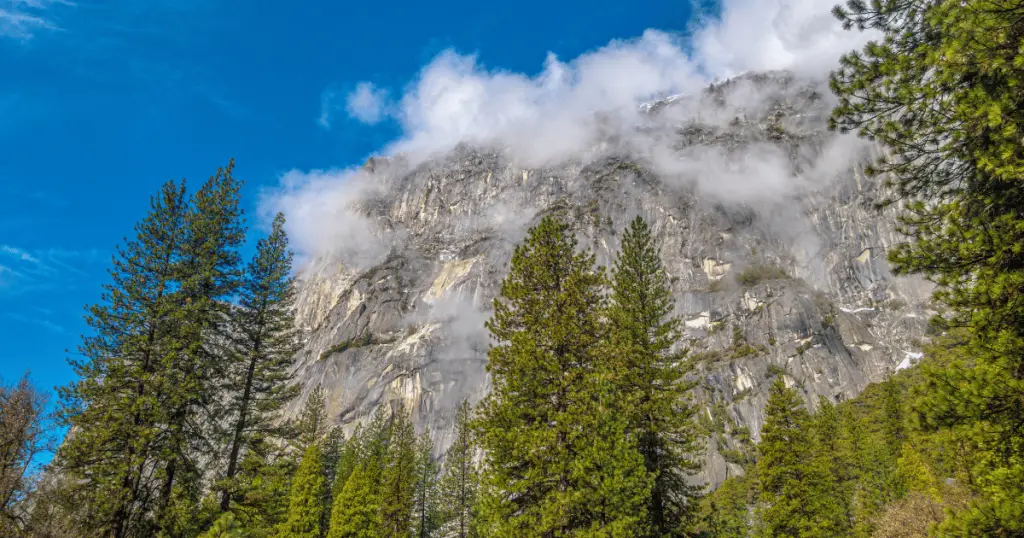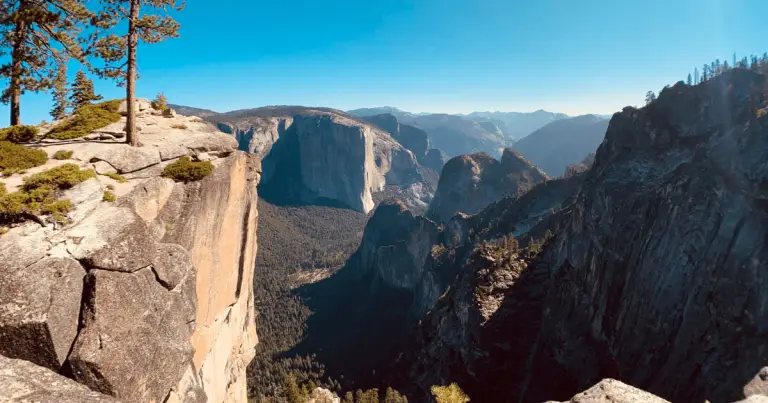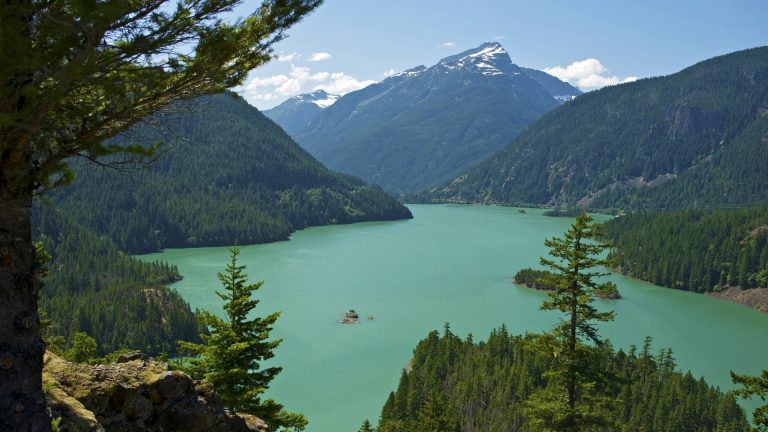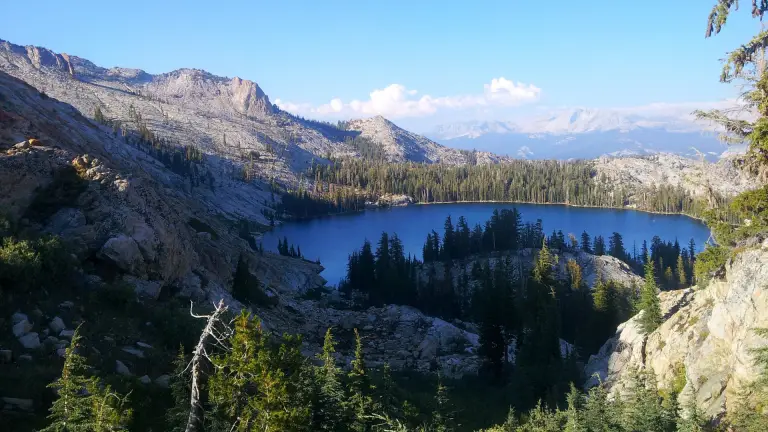Exploring the Majesty of Eagle Peak in Yosemite National Park
Yosemite National Park is known for its picturesque mountain ranges, perfect for those who love to hike and climb. Among the stunning peaks in the park is Eagle Peak. Nestled within the heart of the park, Eagle Peak in Yosemite is among the highest, standing at 11,847 feet.

The journey to Eagle Peak or Point as it is also known, is nothing short of an adventure and awe-inspiring. Reaching the top of this peak is a testament to the hiker’s resilience and zeal. The reward? Uninterrupted, panoramic views of the splendid Yosemite landscape that one can only dream of. The mindful hiker might even spot an eagle soaring high above, a sight that further amplifies the raw, unspoiled beauty of Eagle Point, Yosemite.
The History of Eagle Peak in Yosemite
Eagle Peak’s history dates back to over 270 million years ago, with a variety of geological processes impacting the topography of the region. It is believed to have been shaped by glaciers, a process that has smoothed and rounded the sharp edges of the peak. It was first climbed in the early 1900s by a group of adventurous mountaineers, who became the first to summit this remarkable peak. Since then, many people have attempted to climb the peak, earning it the reputation of being one of the most challenging peaks in the park.
Safety and Preparation for Hiking Eagle Peak in Yosemite
When planning a hike to Eagle Peak in Yosemite, safety and preparation are paramount. Here are some essential tips to keep in mind:
What to Pack
- Navigation Tools: Carry a map and compass to navigate the trails. Although the trails are well-marked, these tools are invaluable when venturing into the wilderness.
- First Aid Kit: Always carry a standard first aid kit for minor injuries.
- Water and Snacks: Hiking at high altitudes increases dehydration. Carry plenty of water and energy-boosting snacks.
- Hiking Gear: Wear sturdy hiking shoes for the rugged terrain, and don’t forget a hat and sunscreen to protect from the sun.
- Flashlight: In case you find yourself on the trail after sundown, a flashlight or headlamp is essential.
Weather Considerations
Keep an eye on the weather forecast before and during your hike. Yosemite’s mountain weather can change rapidly, and conditions at the peak are often colder and windier than at trailheads. Dress in layers, and pack rain gear and extra warm clothing. Avoid hiking if thunderstorms are predicted.

Navigation Advice
Stay on the established trails to protect the fragile alpine environment and for your safety. Pay attention to trail markers and signs to avoid getting lost. Despite the trails being well-marked, it is surprisingly easy to stray off the path. If you do get lost, remain calm and return to the last known trail marker.
Hiking Trails and Routes to Eagle Peak in Yosemite
There are several routes and trails for those wishing to embark on the journey to Eagle Peak. They vary in length and difficulty, each offering a unique experience and breathtaking views of Yosemite.
Upper Yosemite Fall Trail
A popular route to Eagle Peak is the Upper Yosemite Fall Trail. Rated as strenuous, this trail spans approximately 7.2 miles one-way, making it a full-day hike for most. The route starts at Camp 4 near Yosemite Valley and climbs steeply up the north wall of the valley, offering breathtaking views of Yosemite Falls, the highest waterfall in North America. This trail is quite challenging due to its steep ascent and rocky terrain, so it’s best suited for experienced hikers.
El Capitan Trail
Another route is the El Capitan Trail, which is about 8 miles long one-way. This route is less steep compared to the Upper Yosemite Fall Trail, but it is longer and still rated as strenuous. The trail begins at Tamarack Flat Campground and winds through forests and open meadows, leading to stunning views of El Capitan and the Yosemite Valley below.
The Pohono Trail
For the most adventurous and seasoned hikers, the Pohono Trail offers an alternative, longer route to Eagle Peak. Starting from Glacier Point and ending at Tunnel View, this 13-mile-long trail traverses Yosemite’s south rim and boasts stunning views of numerous Yosemite landmarks, including Half Dome, Yosemite Falls, and of course, Eagle Peak. This trail is tough and requires good physical condition, but the panoramic vistas are well worth the effort.
Wildlife Watching at Eagle Peak in Yosemite
One of the delights of hiking Eagle Peak is the opportunity to observe Yosemite’s wildlife in its natural habitat. The park is home to over 400 species of vertebrates which include fish, amphibians, reptiles, birds, and mammals.
Mule Deer
The mule deer, named for their large, mule-like ears, are a common sight around Yosemite. These graceful creatures can often be spotted in meadows and forest edges, especially during dawn and dusk when they are most active.
Black Bears
Yosemite National Park is also home to the American black bear. Although sightings are less common, it’s possible to spot these magnificent creatures during your hike. Remember, they are wild animals, so it’s essential to keep a safe distance and never feed them.
Bird Species
For birdwatchers, Yosemite is nothing short of a paradise, boasting over 260 species of birds. As you traverse the trails leading to Eagle Peak, you may spot a variety of birds including the majestic bald eagles, red-tailed hawks, and warblers. The mountain bluebird, with its vibrant plumage, is a sight to behold.

Camping in the Vicinity of Eagle Peak in Yosemite
Camping near Eagle Peak in Yosemite opens up a world of opportunities for further exploration and a deeper connection with nature. There are a few options for those who want to extend their adventure beyond a single day.
Camp 4
Located in Yosemite Valley, Camp 4 is a popular choice for climbers due to its proximity to several climbing routes. It’s also the starting point for the Upper Yosemite Fall trail, which leads to Eagle Peak. It’s a walk-in campground, and spaces are allocated on a first-come, first-served basis.
Tamarack Flat Campground
If you’re planning to hike the El Capitan Trail, the Tamarack Flat Campground is a convenient option. Nestled in a forest of fir and pine trees, this campground offers a peaceful retreat after a long day of hiking. It’s primitive, with only pit toilets and no running water, so campers need to bring their own water or treat water from a nearby creek.
Wild Camping
For a more immersive wilderness experience, backcountry camping is allowed in Yosemite National Park. It requires a wilderness permit, which includes permission to camp in the wilderness away from established campgrounds. It’s a unique opportunity to sleep under the stars and wake up surrounded by the park’s spectacular landscapes.
FAQ’s about Eagle Peak in Yosemite
What are the Fees for Hiking at Eagle Peak in Yosemite
Entering Yosemite National Park requires a park entrance fee as follows:
- $35 per vehicle: This fee allows all passengers in a private, non-commercial vehicle to enter the park and is valid for seven days.
- $30 per motorcycle: This fee is for one motorcycle for seven days.
- $20 per person: This fee is for individuals on foot or on a bike and is valid for seven days.
In addition, if you’re planning on camping in the backcountry or in one of the campgrounds, there may be additional fees. Wilderness permits for backcountry camping are free, but there is a $5 per person reservation fee. Campground fees range from $6 to $26 per night, depending on the campground. These fees are subject to change
What’s the best time of year to hike to Eagle Peak?
The best time to hike to Eagle Peak in Yosemite National Park typically falls between late May and early October, when the trails are free of snow. However, always check the current trail conditions as weather conditions can vary.
Final Thoughts
Eagle Peak is undoubtedly one of the most challenging but rewarding climbs in Yosemite National Park. For those who love a challenge and enjoy the beauty of the natural world, it is a must on your hiking and climbing bucket list. You’ll experience the wilderness like no other place, feeling accomplished and fulfilled on reaching the summit. Though challenging, the climb is safe with the right preparation, equipment, and mindset, and the reward of experiencing the natural wonders of the region is priceless. So why not take up the challenge and become one of the many who has conquered Eagle Peak?





